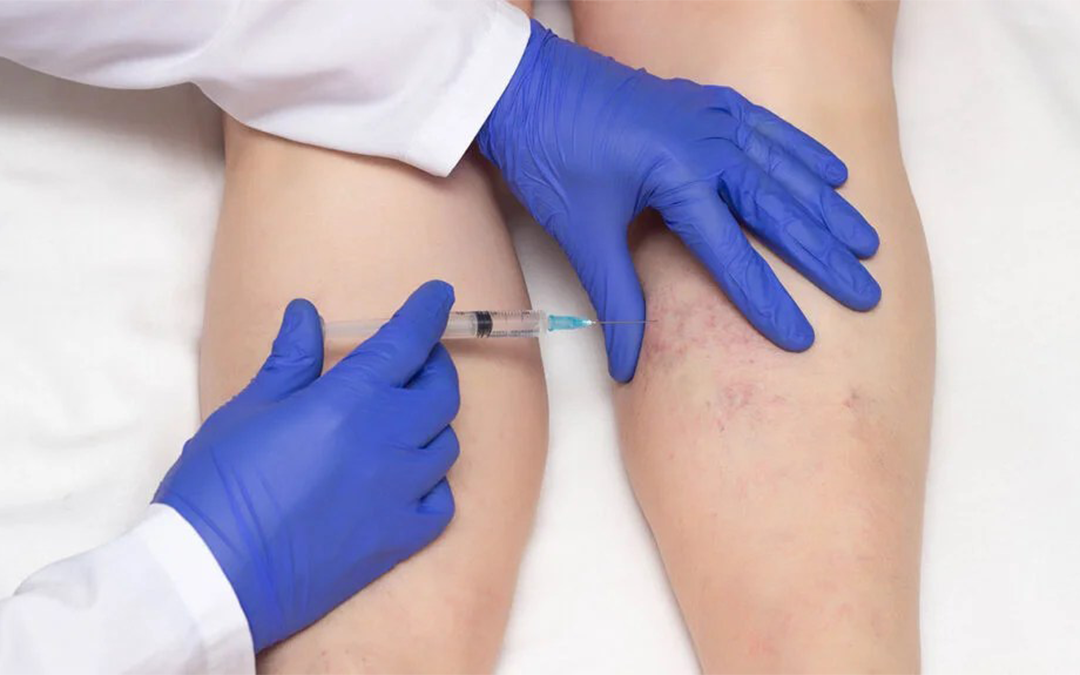Reticulated veins and spider veins can be a source of discomfort and self-consciousness for many individuals. Fortunately, modern medicine offers various treatments to address this common condition. One popular and effective option is sclerotherapy. In this comprehensive guide, we will delve into the details of sclerotherapy, exploring its benefits, procedure, recovery, and expected outcomes, so you can make an informed decision about this treatment.
What is Sclerotherapy?
Sclerotherapy is a non-surgical procedure used to treat reticulated veins and spider veins. It involves injecting a solution directly into the affected veins, causing them to shrink, collapse, and eventually fade away. The solution irritates the vein’s lining, leading to the formation of scar tissue, which eventually closes off the vein.
Benefits of Sclerotherapy
Sclerotherapy offers several advantages as a reticulated vein and spider vein treatment:
- Non-invasive: Sclerotherapy is a minimally invasive procedure that does not require surgery, making it a safer and less intimidating option compared to surgical alternatives.
- High success rate: Sclerotherapy is highly effective in treating reticulated veins and spider veins, with a success rate of approximately 80-90% in improving the appearance of treated veins.
- Minimal downtime: The procedure is typically performed on an outpatient basis, allowing patients to resume their normal activities shortly after treatment.
- Versatility: Sclerotherapy can be used to treat reticulated veins and spider veins in various parts of the body, including the legs, hands, and face.
The Sclerotherapy Procedure
During the sclerotherapy procedure:
- The affected area is cleaned and sterilized.
- A fine needle is used to inject the sclerosing solution directly into the targeted veins. The solution irritates the vein walls, causing them to seal shut.
- Compression stockings or bandages are applied to assist in vein closure and improve blood flow.
- Multiple injections may be necessary, depending on the extent and location of the veins.
Recovery and Expected Outcomes
Following the procedure, patients can expect:
- Mild discomfort: Some individuals may experience mild discomfort, cramping, or a burning sensation at the injection sites. These symptoms usually subside within a few days.
- Post-treatment care: Patients are advised to wear compression stockings as recommended by their healthcare provider and avoid strenuous activities for a few days after the procedure.
- Visible improvement: Over time, treated veins will fade and gradually disappear. However, it’s important to note that multiple treatment sessions may be required to achieve desired results, especially for larger or more severe reticulated veins and spider veins.
Sclerotherapy is an effective, non-surgical treatment option for reticulated veins and spider veins. With its high success rate, minimal downtime, and versatile application, sclerotherapy has become a popular choice for individuals seeking to improve their appearance and alleviate discomfort associated with veins. Consulting with a qualified healthcare professional is crucial to determine if sclerotherapy is the right treatment for your specific condition. They can assess your veins, discuss potential risks or side effects, and provide personalized recommendations to help you achieve healthier, more aesthetically pleasing legs. Don’t let reticulated veins and spider veins hold you back—consider sclerotherapy as a viable solution for regaining confidence and overall well-being. Call Ascent Laser Aesthetics at (413) 224-2658 in East Longmeadow to discuss more and schedule your consultation.


